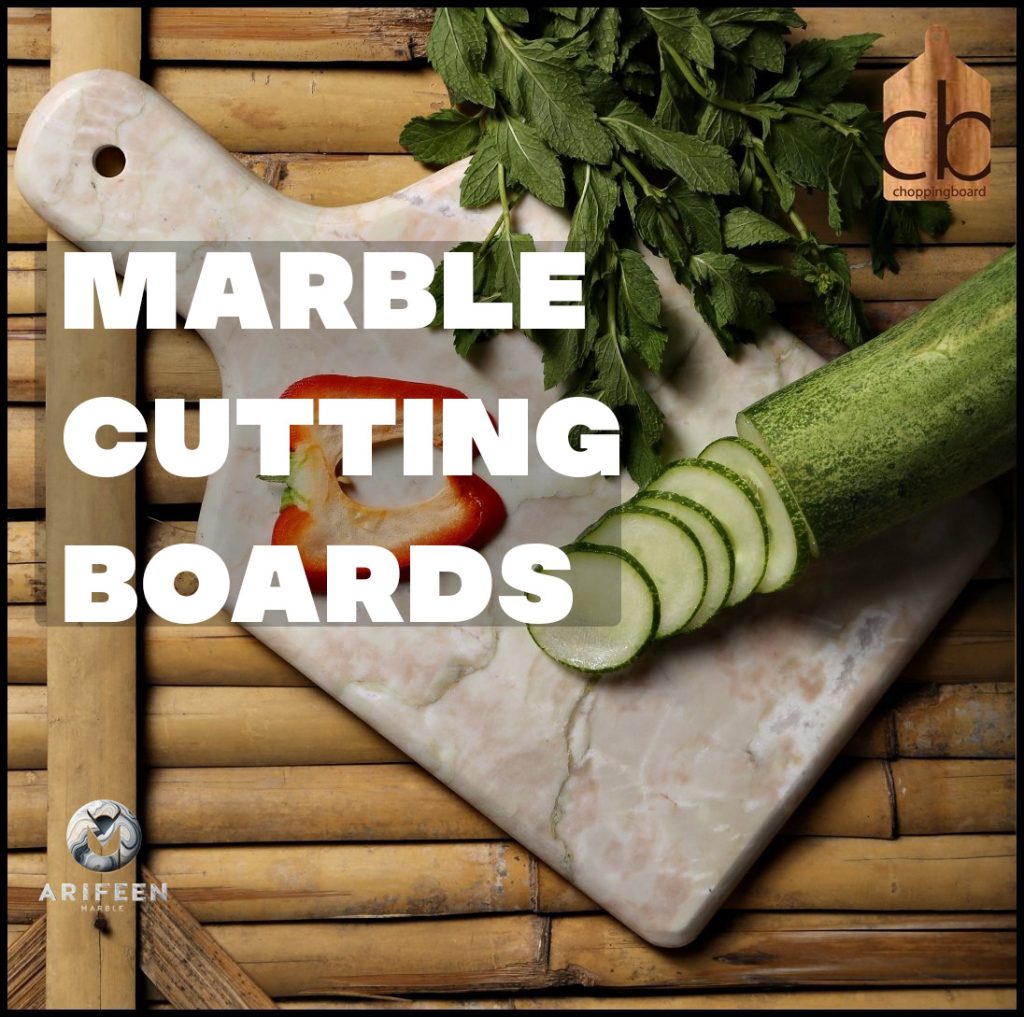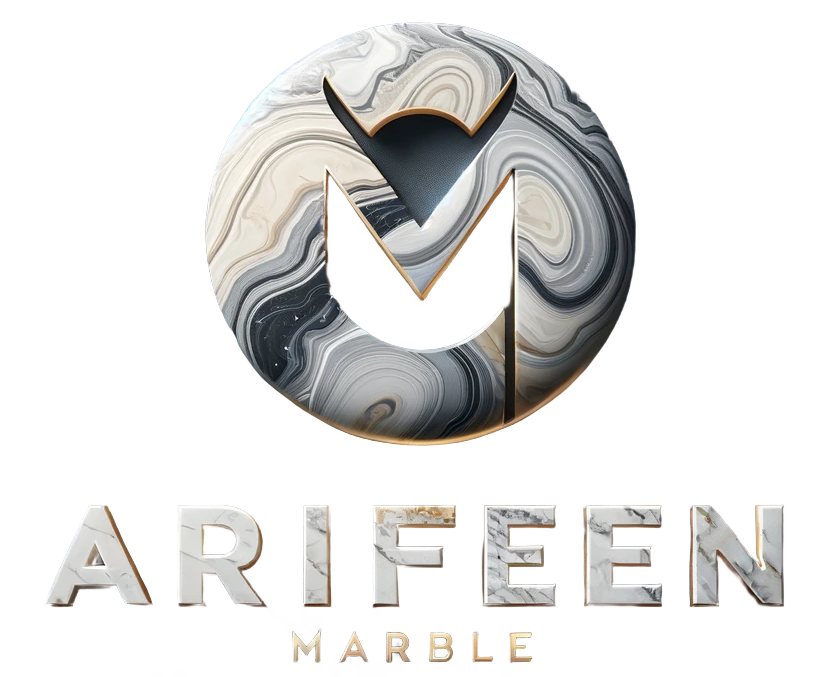Marble Cutting Board

Marble cutting boards have gained popularity in recent years as both a practical kitchen tool and a stylish addition to culinary spaces. In this comprehensive guide, we’ll explore the benefits of marble cutting boards, their suitability for different purposes, and the variety of options available in the market.
A marble cutting board is a flat, sturdy surface made from natural marble stone. It serves as an excellent platform for food preparation, offering a smooth and cool surface that is ideal for tasks like chopping, slicing, and mincing.
Marble cutting boards come in various sizes, shapes, and designs to suit different kitchen needs and aesthetic preferences. From compact boards for daily use to large boards for entertaining and food presentation, there’s a marble cutting board for every occasion.
Are Marble Cutting Boards Good?
Durability:
Marble is a durable and long-lasting material, making it suitable for heavy-duty chopping and cutting.Hygiene:
Marble has natural antimicrobial properties, which can help inhibit the growth of bacteria on the surface.Heat Resistance:
Marble is heat-resistant, allowing you to place hot pots and pans directly on the board without causing damage.Aesthetic Appeal:
Marble cutting boards add a touch of elegance to your kitchen with their unique veining and luxurious appearance.Black Marble Cutting Boards
Black marble cutting boards are a stunning choice for modern kitchens. The dark hue provides a striking contrast to light-colored foods and enhances the visual appeal of your culinary creations. Additionally, black marble is just as durable and functional as its lighter counterparts.
Marble Cutting Boards Large
Large marble cutting boards are perfect for handling larger quantities of ingredients or for preparing elaborate meals. They offer ample space for cutting multiple items simultaneously and can also double as serving platters for cheese, charcuterie, and appetizers.
White Marble Cutting Boards
White marble cutting boards exude a classic and timeless elegance. Their pristine white surface creates a beautiful backdrop for food photography and presentation, making them a favorite among food enthusiasts and professional chefs alike.
Types of Cutting Boards
Choosing the right cutting board material is essential for efficient food preparation and maintaining the quality of your knives. In this guide, we’ll delve into various cutting board materials, including marble, granite, bamboo, acacia, walnut, teak, cherry, stainless steel, polyethylene, and acrylic, to help you make an informed decision.
Marble Chopping Board
Marble chopping boards offer a luxurious and durable surface for chopping fruits, vegetables, and herbs. Their cool and smooth texture is gentle on knife blades, reducing wear and tear over time. However, marble cutting boards are not suitable for cutting raw meat or poultry due to their porous nature.
Personalized Marble Cutting Boards
Personalized marble cutting boards add a unique touch to your kitchen decor. You can customize them with engraved initials, names, or designs, making them ideal for gifts or special occasions.
Acacia vs Bamboo Cutting Board
Acacia and bamboo cutting boards are both popular choices known for their durability and sustainability. Acacia boards have a rich, dark hue and natural antibacterial properties, while bamboo boards are lighter in color and highly renewable. Both materials offer excellent knife resistance and are gentle on knife edges.
Glass Cutting Board
While glass cutting boards are sleek and easy to clean, they can dull knife blades quickly and are prone to chipping or breaking when used aggressively.
Which Cutting Board Material is Best
Marble Cutting Board:
Ideal for fruits, vegetables, and herbs, but not recommended for raw meat.Granite Cutting Board:
Similar to marble in terms of durability and knife-friendliness.Bamboo Cutting Board:
Eco-friendly, durable, and gentle on knives.Acacia Cutting Board:
Rich in color, antibacterial, and suitable for various cutting tasks.Walnut Cutting Board:
Hardwood option with a beautiful, dark appearance and knife-friendly surface.Teak Cutting Board:
Known for its durability, moisture resistance, and natural oils that inhibit bacterial growth.Cherry Cutting Board:
Hardwood with a reddish-brown color, suitable for cutting fruits, vegetables, and bread.Stainless Steel Cutting Board:
Hygienic, easy to clean, and suitable for heavy-duty chopping.Polyethylene Cutting Board:
Highly durable, non-porous, and dishwasher-safe.Acrylic Cutting Board:
Lightweight, easy to clean, and available in various colors and designs.Wood, Marble, and Plastic Cutting Board Care: The Do’s & Dont’s
Proper care and maintenance are crucial for prolonging the lifespan of your cutting boards, whether they are made of wood, marble, or plastic. In this section, we’ll outline the essential do’s and don’ts to keep your cutting boards in optimal condition.
Wood Cutting Boards:
Do’s:
- Hand Wash: Always wash wood cutting boards by hand with warm, soapy water. Avoid soaking them for extended periods.
- Dry Thoroughly: After washing, dry the board thoroughly with a clean towel and allow it to air dry upright to prevent warping.
- Oil Regularly: Apply food-safe mineral oil or cutting board oil regularly to maintain the board’s moisture and prevent drying or cracking.
- Sanitize with Vinegar: Periodically sanitize wood cutting boards by wiping them with a mixture of vinegar and water.
Don’ts:
- Dishwasher: Avoid washing wood cutting boards in the dishwasher, as the high heat and moisture can damage the wood.
- Standing Water: Never let wood cutting boards sit in standing water, as it can lead to warping, mold, and bacteria growth.
- Direct Heat: Keep wood cutting boards away from direct heat sources, such as stovetops or ovens, to prevent damage.
Marble Cutting Boards:
Do’s:
- Wipe Clean: After each use, wipe marble cutting boards with a damp cloth or sponge and mild dish soap.
- Use Cutting Mats: To prevent scratching, use cutting mats or parchment paper when cutting on marble boards.
- Dry Immediately: Dry marble boards promptly after cleaning to prevent water stains or discoloration.
Don’ts:
- Acidic Cleaners: Avoid using acidic cleaners or abrasive scrubbers on marble boards, as they can etch or damage the surface.
- Heavy Impact: Do not drop heavy objects or knives on marble cutting boards, as they can chip or crack.
Plastic Cutting Boards:
Do’s:
- Dishwasher Safe: Most plastic cutting boards are dishwasher safe, making them easy to clean and sanitize.
- Replace When Worn: Regularly inspect plastic cutting boards for signs of wear, such as deep grooves or stains, and replace them as needed.
- Use Non-Abrasive Cleaners: Use non-abrasive cleaners and soft sponges or brushes to clean plastic cutting boards without scratching the surface.
Don’ts:
- Cutting Hot Foods: Avoid cutting hot foods directly on plastic cutting boards, as they can warp or melt.
- Staining Ingredients: Do not leave staining ingredients, such as turmeric or beets, on plastic cutting boards for extended periods, as they can discolor the surface.
Exploring the Advantages and Comparison of Marble Cutting Boards
When it comes to choosing a cutting board material, understanding the pros and cons is essential. Let’s delve into an in-depth comparison of marble cutting boards with other materials like wood, glass, granite, bamboo, and more, highlighting their unique attributes.
Marble Cutting Boards vs. Wood Cutting Boards:
- Advantages of Marble: Marble cutting boards offer a smooth and cool surface that is gentle on knife edges. They are also non-porous, making them easy to clean and resistant to bacterial growth.
- Advantages of Wood: Wood cutting boards are durable, knife-friendly, and add a natural aesthetic to the kitchen. However, they require regular maintenance and can be prone to staining and odors.
Marble Cutting Boards vs. Glass Cutting Boards:
- Advantages of Marble: Marble cutting boards are less likely to dull knife blades compared to glass boards. They also provide a luxurious appearance and are heat-resistant.
- Advantages of Glass: Glass cutting boards are hygienic, easy to clean, and come in various designs. However, they can be harsh on knife edges and prone to chipping or breaking.
Marble Cutting Boards vs. Granite Cutting Boards:
- Advantages of Marble: Marble cutting boards offer similar benefits to granite, such as durability and heat resistance. They also showcase unique veining patterns that add elegance to the kitchen.
- Advantages of Granite: Granite cutting boards are highly durable, scratch-resistant, and suitable for heavy chopping. However, they can be heavy and require periodic sealing for maintenance.
Marble Cutting Boards vs. Bamboo Cutting Boards:
- Advantages of Marble: Marble cutting boards are non-porous and easy to clean, making them ideal for hygiene-conscious individuals. They also offer a sleek and modern aesthetic.
- Advantages of Bamboo: Bamboo cutting boards are eco-friendly, lightweight, and naturally antimicrobial. However, they may require more frequent oiling to maintain their condition.
Hygiene and Maintenance of Marble Cutting Boards:
Marble cutting boards excel in terms of hygiene due to their non-porous nature, which prevents bacteria from penetrating the surface. Cleaning marble boards is simple, requiring only mild soap and water. Additionally, marble’s smooth surface reduces the risk of food particles getting trapped, further enhancing cleanliness.
Durability and Longevity of Marble Cutting Boards:
Despite being a softer material than granite or glass, marble cutting boards are still durable and suitable for daily use. Proper care, such as avoiding heavy impact and using cutting mats for sharp knives, can prolong the lifespan of marble boards. Their resistance to heat and stains also contributes to their longevity.
Aesthetic Appeal and Practicality of Marble Cutting Boards:
Marble cutting boards are prized for their aesthetic appeal, with unique veining patterns that make each board one-of-a-kind. Beyond their visual charm, marble boards are practical for various kitchen tasks, including food preparation, serving, and food photography. They offer a luxurious backdrop for culinary creations and can elevate the overall presentation of dishes.

